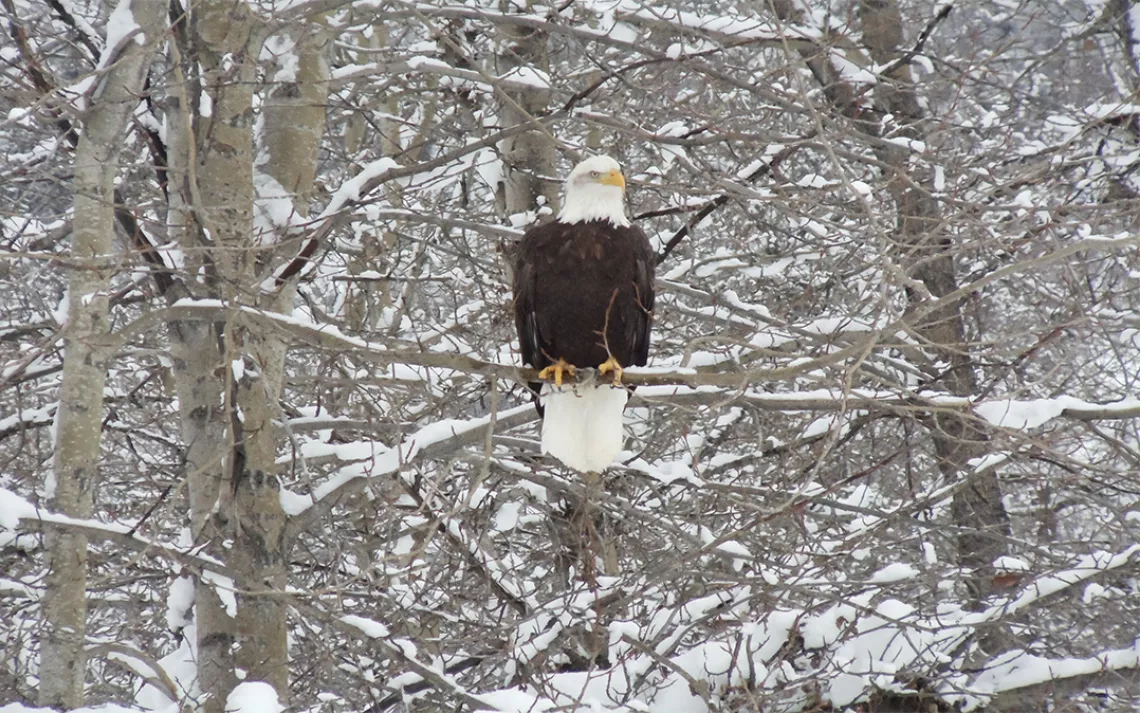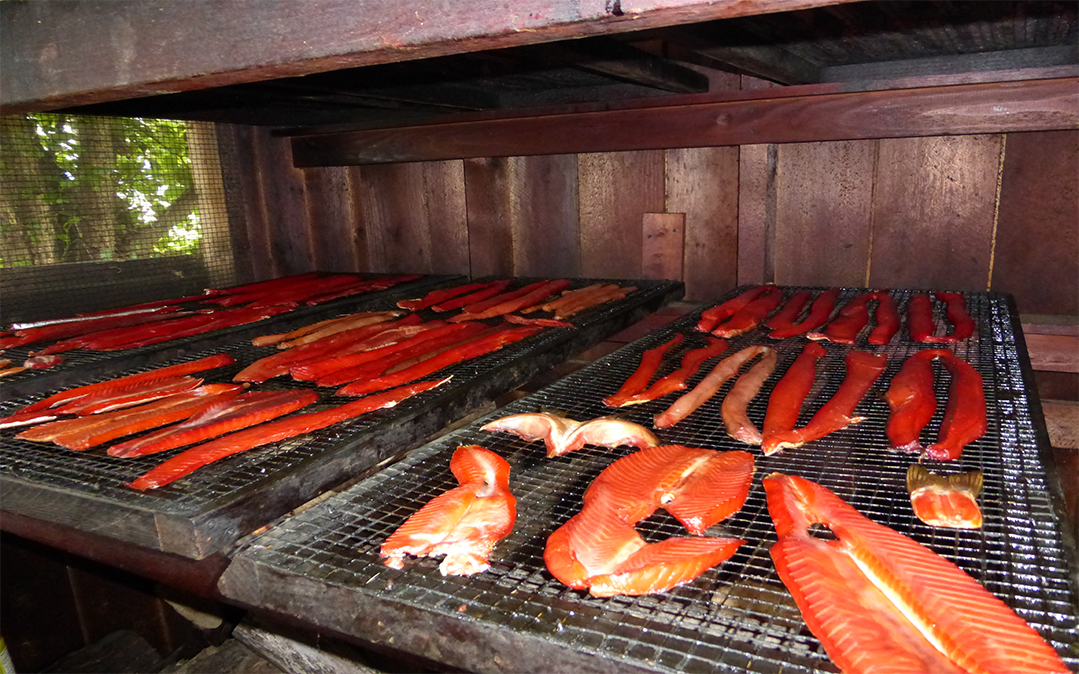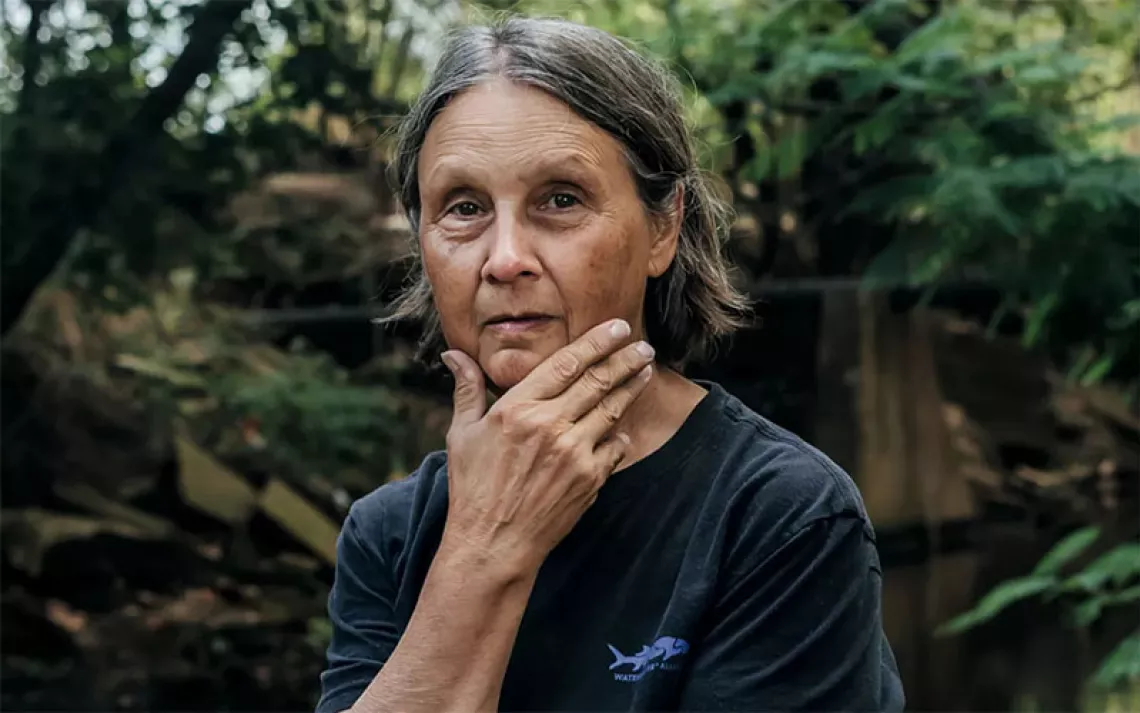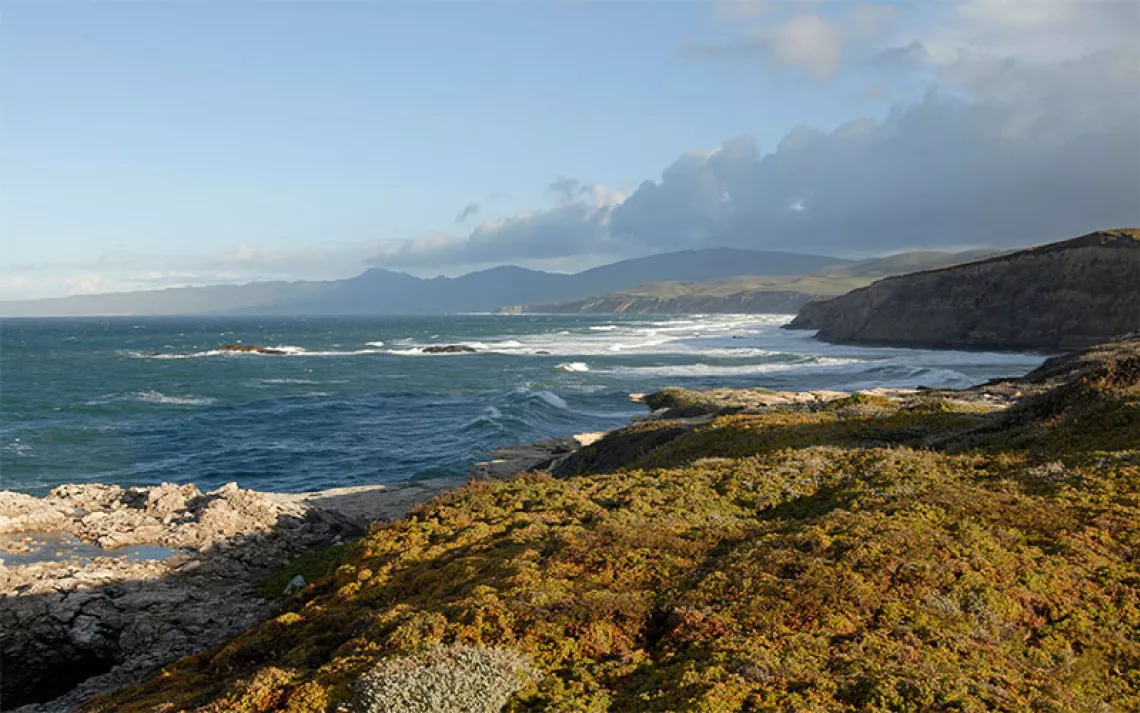Where the Eagles Cry, a Mine Looms
Alaska panhandle mining threatens to wildlife, native village

Photos courtesy of Lani Hotch
Along the Chilkat River, on the north end of the Alaska panhandle, a small Tlingit community has lasted so long that its name, Klukwan, literally means “eternal village.”
“That shows you how long this village has been here,” says Lani Hotch, the executive director of Klukwan’s Cultural Heritage Center and a textile artist and weaver who has lived most of her life in this community that dates back centuries and perhaps even millennia.
The village’s location and long history are wholly dependent on the Chilkat—"our lifeline,” Hotch calls it—and its yearly runs of all five major Pacific salmon species. Particularly important is the late-season return of spawning chum salmon that swim up the Chilkat and a tributary river thanks to underground geothermal vents that keep the rivers flowing when other streams have frozen over.
“Most people in Klukwan depend on that salmon from the river to get us through winter,” Hotch says of the community, population 139, according to the 2000 census. “We’re still largely subsistence.”
 The Tlingits aren’t alone in surviving on salmon. Thousands of bald eagles journey to the Chilkat each year for the buffet of late-fall chum. The epic migration, considered the planet’s largest concentration of bald eagles, led Alaska to protect the 48,000-acre Chilkat Bald Eagle Preserve in 1982. Today, winter birders also annually flock to the area to witness the spectacle of the eagles gathering and gorging along the river. The boost in tourism has contributed to the nearby fishing and one-time logging town of Haines—which provides highway access to the Chilkat Valley—to name itself the “Adventure Capital of Alaska.”
The Tlingits aren’t alone in surviving on salmon. Thousands of bald eagles journey to the Chilkat each year for the buffet of late-fall chum. The epic migration, considered the planet’s largest concentration of bald eagles, led Alaska to protect the 48,000-acre Chilkat Bald Eagle Preserve in 1982. Today, winter birders also annually flock to the area to witness the spectacle of the eagles gathering and gorging along the river. The boost in tourism has contributed to the nearby fishing and one-time logging town of Haines—which provides highway access to the Chilkat Valley—to name itself the “Adventure Capital of Alaska.”
“The abundance of salmon, that’s what brought the people here to begin with,” Hotch says, “and if the salmon go away, the people are going to go away.”
Hotch is worried about the fate of the salmon as British Columbia-based Constantine Metal Resources Ltd. expands its exploration-mining efforts of a major copper, gold, zinc, and silver deposit on mostly federal lands along the upstream reaches of the Chilkat. The company got approval last year to expand development of what’s known as the Palmer Project, including 40 new exploration drill sites, 2.5 miles of new roads, and a helicopter staging area. While full-blown mining is likely still a few years away, Constantine officials have suggested the Palmer Project has the potential to be a sizable underground mine with high-grade ore and highway and shipping access through Haines.
Some residents in Haines are eager for a new industry boom and mining jobs, and support Constantine’s efforts. Liz Cornejo, Constantine’s exploration and community manager, notes that the project is situated in a designated and historic mining district. A 1982 agreement among the Alaska Miners Association, conservation groups, and others approved mining and other development in the area—a tradeoff to the creation of the bald eagle preserve.
But other area residents are skeptical. Guy Archibald, of the Southeast Alaska Conservation Council—one of the groups that signed the 1982 accord—says the Palmer Project isn’t covered under that deal. “Placer mining, which has a lot lower impact, was what was envisioned in 1982,” Archibald says. “Nobody was envisioning a large underground mine. The reality has changed.”
The incremental expansion by Constantine—periodically getting approval for a few miles of roads and piecemeal development—is already altering the landscape, Archibald says, even though the project is still in the “exploration” phase. Mining would eventually mean ore processing and steady truck traffic on steep roads, and require management of wastewater, acidic mine tailings, and waste rock, all posing risks to the river system. A 2014 tailings pond dam breach in British Columbia is among many cautionary cases. That spill poured 10 million cubic meters of tainted water, enough to fill 4,000 Olympic-size swimming pools, and 4.5 million cubic meters of mining slurry from the Mount Polley copper and gold mine into one of the world’s cleanest and deepest freshwater lakes.
Even small changes from mining could have grave effects, says Gershon Cohen, project director of Alaska Clean Water Advocacy, based in Haines. “If they change the metal profiles in those rivers by an infinitesimal amount, that can literally end the salmon runs in a heartbeat,” says Cohen, since the fish partly rely on chemical cues to find their way back to their home spawning streams. “It doesn’t have to be a catastrophic failure to destroy the salmon.”
To halt the development, Klukwan has nominated the Chilkat River as an Outstanding National Resource Water (ONRW), a Clean Water Act designation that recognizes exceptional rivers and lakes and prohibits significant degradation of water quality, such as discharging mining waste. River proponents say the Chilkat, with its natural and cultural values, is a strong candidate for such designation. But there’s one major hitch: Alaska, in defiance of federal guidelines, doesn’t have a process in place to decide on ONRW nominations.
In recent years, the state has hired consultants and convened workgroups to ostensibly establish protocol for such designations, but still hasn’t committed to a program. “As of yet, there is no process where [Alaska] citizens can protect a river,” says Archibald, who attributes the state’s reluctance, in part, to the mining industry’s political muscle. “That is fundamentally wrong.”
Constantine’s Cornejo says the company is still reviewing the implications of ONRW designation, an effort limited by the absence of a state process. She adds, “We care about water quality and share a common goal of maintaining a healthy watershed.” But Cohen and others say mine supporters have been spreading misinformation about the consequences of ONRW status, with some rumors suggesting it would prohibit even boating on the Chilkat.
In Klukwan, Hotch and others hope the policy impasse is resolved soon enough to give the village a chance to make its case for protecting the Chilkat and blocking major mining. “We’re here for the long haul, and we want to continue to live here and have the same kind of environment that our grandparents had,” Hotch says.
Besides, after millennia, the Tlingit of Klukwan have already decided on the Chilkat’s value. “We don’t need someone telling us how important the river is. We know.”
 The Magazine of The Sierra Club
The Magazine of The Sierra Club



